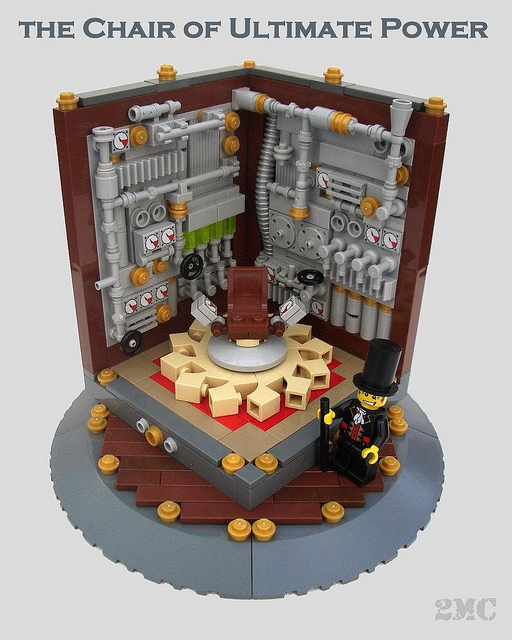A Dow-Jones reporter covering a recent American Society of Clinical Oncology meeting found that, "Perhaps the most original display of this year’s meeting — which wrapped up yesterday — was from Seattle Genetics. The company invited participants to place Lego blocks to build a huge model of an antibody conjugate — not-so-coincidentally, a type of drug Seattle Genetics is developing. That class of treatment uses a cell-killing drug attached to a type of antibody so that the large-molecule drug seeks out the cancer, then kills it.
In planning the assembly, the team required about 85,000 Lego pieces (mostly green ones).
To build the model, two Ohio State University professors/self-proclaimed Lego enthusiasts–Paul Janssen and Benn Coifman–were enlisted. Both are accomplished Lego model builders: Coifman has built more than 200 model trains from the small plastic bricks, while Jannsen got some attention recently for making an intricate
eight-foot-by-eight-foot model of the university’s football stadium.
 |
Paul Janssen's to-scale replica of Ohio Stadium
took more than two years to build. |
"Paul Janssen is 42 years old. He's an associate professor of physiology and cell biology and an associate professor in cardiovascular medicine at Ohio State University. He holds a Ph.D.
And he loves playing with Legos.
"People who haven't seen the Lego models built don't know what it takes, and they easily dismiss it," Janssen said. "But it's not playing anymore; it's using it as an art medium. I've seen many people who think it's a nerdy hobby, but I haven't met anyone who, once they've seen it, still holds that view."
Janssen began playing with Legos when he was around 4 but stopped once he got to middle school -- plastic bricks took a back seat to soccer and girls. Years later, however, he took his old toys out to play with his son, and it snowballed into a hobby.
This continued love for the toy propelled Janssen to construct a to-scale replica of the Buckeyes' famed Ohio Stadium ... entirely out of Legos. It took him four years to collect the pieces and more than 1,000 hours to actually build the horseshoe-shaped stadium -- a difficult task given the rectangular shape of the bricks."
 ToysRUs sale
ToysRUs sale


























